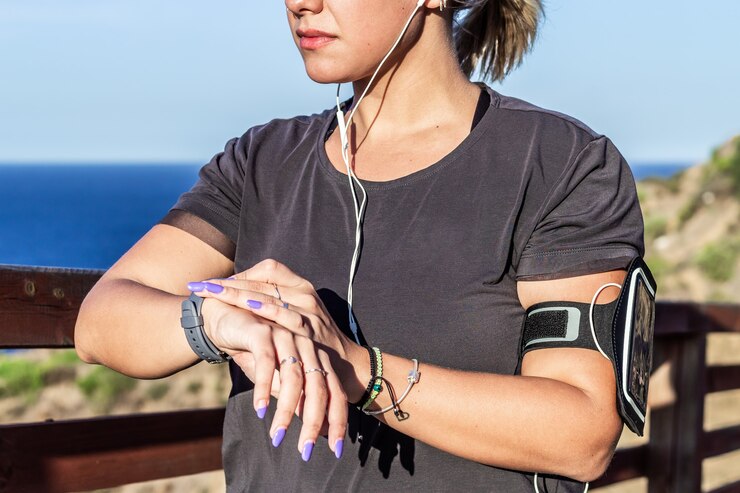Wearable Tech Advancements in Health are transforming how we monitor and improve well-being. At Spread Safe, we’ve seen the rise of smartwatches, fitness bands, and medical-grade patches that track vital signs around the clock. These devices are no longer limited to counting steps; they now measure heart rate variability, oxygen saturation, sleep patterns, and even stress levels.
With Wearable Tech Advancements in Health, individuals gain access to personalized insights that guide healthier choices. From early detection of irregular heart rhythms to improved management of chronic conditions, these innovations empower users and healthcare professionals alike to act sooner and smarter.
Evolution of Wearable Health Devices
From Simple Trackers to Medical-Grade Instruments
Early wearables counted steps and calories. Today, devices like the Apple Watch and Fitbit Sense use optical sensors and ECG capabilities to monitor heart health. Medical-grade wearables incorporate FDA-approved features that measure glucose, blood pressure, and respiratory rates.
Integration with Telehealth Services
Remote consultations rely on wearable data for more accurate diagnoses. Doctors can monitor patients’ vitals in real time and adjust treatment plans seamlessly, reducing hospital visits and boosting convenience.
Key Features Driving Health Wearables
Continuous Heart Monitoring
Continuous ECG and heart-rate variability tracking detect arrhythmias early. Alerts prompt users to seek medical attention, potentially averting serious events.
Sleep Analysis and Guidance
Using motion, heart rate, and blood oxygen sensors, wearables map sleep cycles and disturbances. Custom sleep coaching recommendations help users improve rest quality.
Blood Oxygen and Respiratory Tracking
SpO₂ sensors monitor oxygen saturation levels, ideal for those with sleep apnea or respiratory conditions. Some devices offer alerts when values fall below healthy thresholds.
Stress Monitoring and Mental Well-being
By analyzing heart rate patterns and breathing, wearables can detect signs of stress. They often pair with breathing exercises or mindfulness apps to encourage relaxation in real time.
How Wearable Tech Advancements in Health Impact Daily Life
Personalized Fitness and Health Insights
Wearables turn raw data into actionable goals. For example, they can suggest workout intensity based on recovery status and stress levels, optimizing balance between effort and rest.
Chronic Disease Management
Individuals with diabetes, hypertension, or cardiac issues use wearables to log trends and share data with caregivers. This continuous monitoring supports informed decisions and treatment adjustments.
Early Detection and Preventive Care
Wearables identify anomalies—like irregular heartbeats or abnormal oxygen levels—prompting medical review before conditions worsen. Early intervention saves time, money, and lives.
Popular Wearable Devices Making Waves
Smartwatches with Health Focus
Industry leaders like Apple Watch and Samsung Galaxy Watch offer ECG, SpO₂, and fitness tracking. They sync with health apps for easier data sharing.
Fitness Bands for Budget Users
Devices like Garmin Vivosmart and Fitbit Inspire pack heart rate, stress, and activity tracking into affordable wristbands, making wellness tech accessible to many.
Wearable Patches and Sensors
Patch-based systems (e.g., continuous glucose monitors or chest-worn patches) deliver hospital-quality data non-invasively, ideal for long-term patient monitoring and outpatient care.
Smart Rings and Earbuds
Rings (such as Oura) track temperature and readiness. Specialized earbuds measure core body temperature, hydration, and step count—providing discrete, all-day feedback.
Choosing the Right Wearable
Identify Your Needs: Fitness, stress management, or health monitoring? Different devices cater to different goals.
Check Medical Validations: Look for FDA approval or CE marking for accurate readings.
Battery Life vs Functionality: Smartwatches need daily charging, while bands and patches may last up to a week.
Ecosystem Compatibility: Ensure seamless integration with your phone, apps, and healthcare platform.
Privacy and Security: Review data encryption, storage, and sharing terms before committing.
Challenges and Considerations
Sensor Accuracy: Always compare with clinical-grade tools; no wearable replaces professional testing.
Data Privacy: Continuous tracking raises privacy concerns—opt for manufacturers with good transparency and security.
User Adherence: Devices only help when consistently worn; comfort, aesthetics, and reminders matter.
Regulatory Compliance: Regulations vary by region; understand limits and approvals of each device in your market.
FAQs
Q1. How accurate are Wearable Tech Advancements in Health devices?
A: Quite accurate for general tracking heartrate, sleep, steps but less so for medical-grade metrics. Verify with traditional monitors when health decisions hinge on readings.
Q2. Can wearables detect illness early?
A: Yes. Many track trends like elevated resting heart rate or reduced SpO₂, which may indicate injury or infection, prompting timely medical advice.
Q3. Do these wearables require regular charging?
A: Smartwatches typically need charging every 1–2 days. Bands and rings often last up to 7 days. Choose based on your usage patterns.
Q4. Are health wearables safe for older adults?
A: Generally yes. FDA-approved models are safe. Consult a physician if you have sensitive conditions like pacemakers or epilepsy.
Q5. Can I share wearable data with my doctor?
A: Most platforms allow exporting or direct syncing of health data to telemedicine services, making it easy for medical review between visits.
Conclusion
Wearable Tech Advancements in Health have opened a new era in personalized wellness and preventive care. At Spread Safe, we celebrate how these devices empower individuals with real-time health insights, better fitness guidance, and early detection capabilities. From smart rings to FDA-approved sensors, today’s wearables enhance lives combining convenience with meaningful data.
By choosing the right device and staying consistent, users join a global movement toward proactive, informed health. These advancements are more than trends; they mark a fundamental shift in how we understand and protect our well-being. Wear it, track it, benefit from it your health deserves nothing less.




